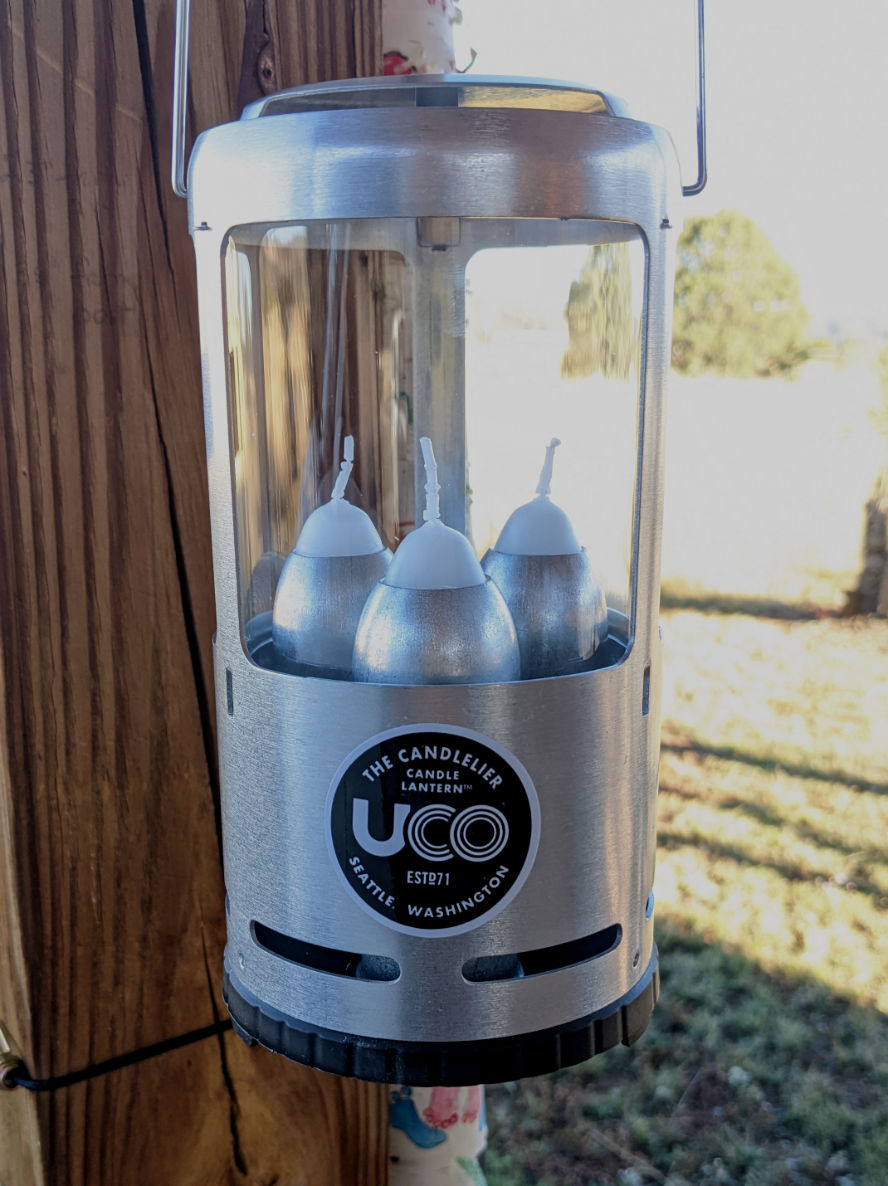
THE CRISCO CANDLE HEATER I TESTED EARLIER was a completely amateur contraption. But what result would I get with a professionally designed and manufactured candle-based heater? To find out I bought the UCO Gear Candlelier Candle Lantern.
UCO Gear’s promotional literature says the Candlelier’s three candles produce 5,000 BTUs of heat that can “fend off the chill.” They also say you can place small things — like a mug — atop the Candlelier to warm them or keep them hot.

Five-thousand BTUs? Really? Compare it to other popular heaters:

There are reasons to be skeptical. Perhaps the Candlelier’s specially sized candles are made from an exotic energy packed substance. Vibranium perhaps? But one mustn’t rush to judgement. That’s why we test things — even if our testing isn’t up to the standards of serious science.

Let’s look at the parts
The aluminum external frame holds a glass wind guard and clicks onto a molded plastic base. There’s a wire handle for carrying or hanging the lantern.
Inside, clipped to the plastic base, are three aluminum candle sleeves with slots that allow you to monitor how much candle remains. The candles are pushed to the tops of the sleeves by springs. A metal disk fits between the springs and the candles. Fastening the candle-disk-spring-sleeve assembly to the base requires a little manual dexterity. Once the candles are in place and lit, the frame and wind guard can be attached to the base. Slots at the top of the frame allow heat and combustion byproducts to escape. Slots at the bottom allow fresh air in. All assembled, the Candlelier is 8 inches tall and 4 inches in diameter — about the size of a can of Foster’s Lager.

Experiment 1: Light ‘er up
I tested the Candlelier the night after the Crisco candle. Once again it was 46°F/7.7°C in the van at about 4 AM. And, as before, I placed it on the floor. Then I waited for the heat.
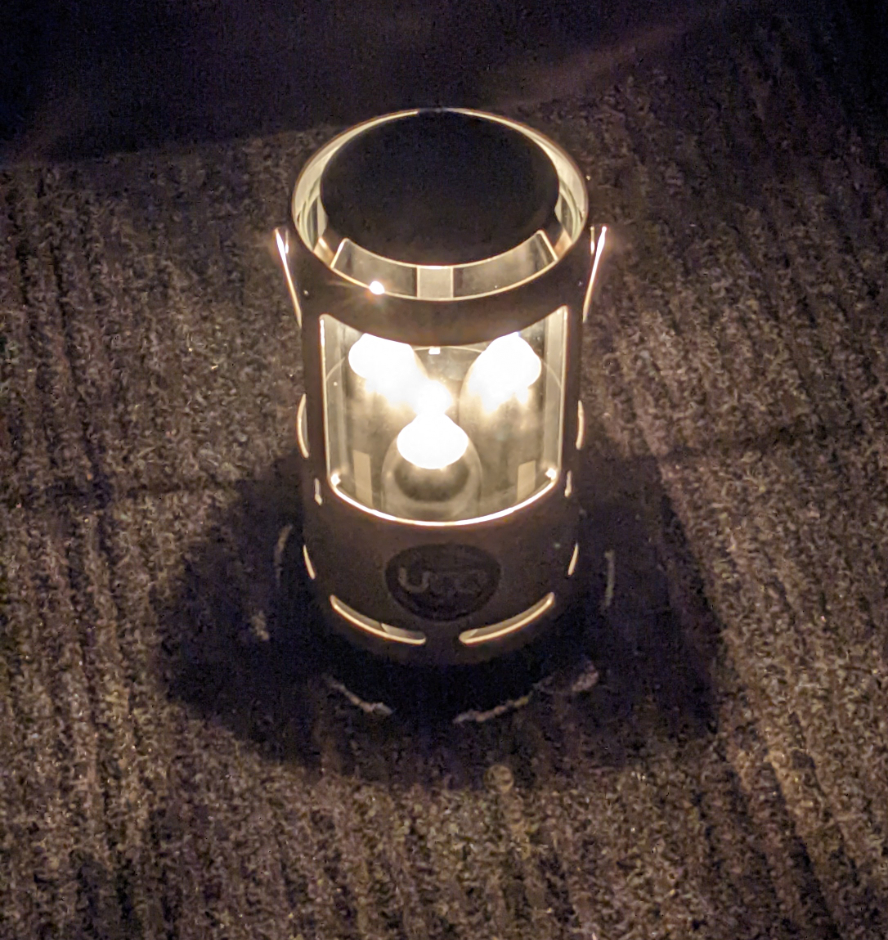
And hour later the temperature was… 46°F/7.7°C. Forty-five minutes later it was… 46°F/7.7°C.

How large of a space was I trying to heat? An empty standard sized cargo van is about six feet wide, four-and-a-half feet high and, ten feet from the back door to the back of the driver seat (and the curtain I have blocking off the cab). So about 324 cubic feet. About a third of that space is occupied by me and my stuff, leaving about 216 cubic feet. A 6 x 6 x 6 foot cube. Not that much.
Experiment 2: Getting a little creative
Obviously, the Candlelier was putting out some heat, just not enough. And the heat was dissipating before it reached the thermometer four feet away. What if I were to do a variation of the clay pot candle heater, adding some type of heat absorbing mass to the top? Hmmmm, what did I have? Ah-ha, my small cast iron skillet. As you can see, that — and putting the thermometer right next to it — made a difference after only fifteen minutes. (This violated the scientific method where you’re supposed to change only one thing at a time. But it was almost dawn and I was cold and tired. Apologies to my high school chemistry teacher, Mr. Harrie.)
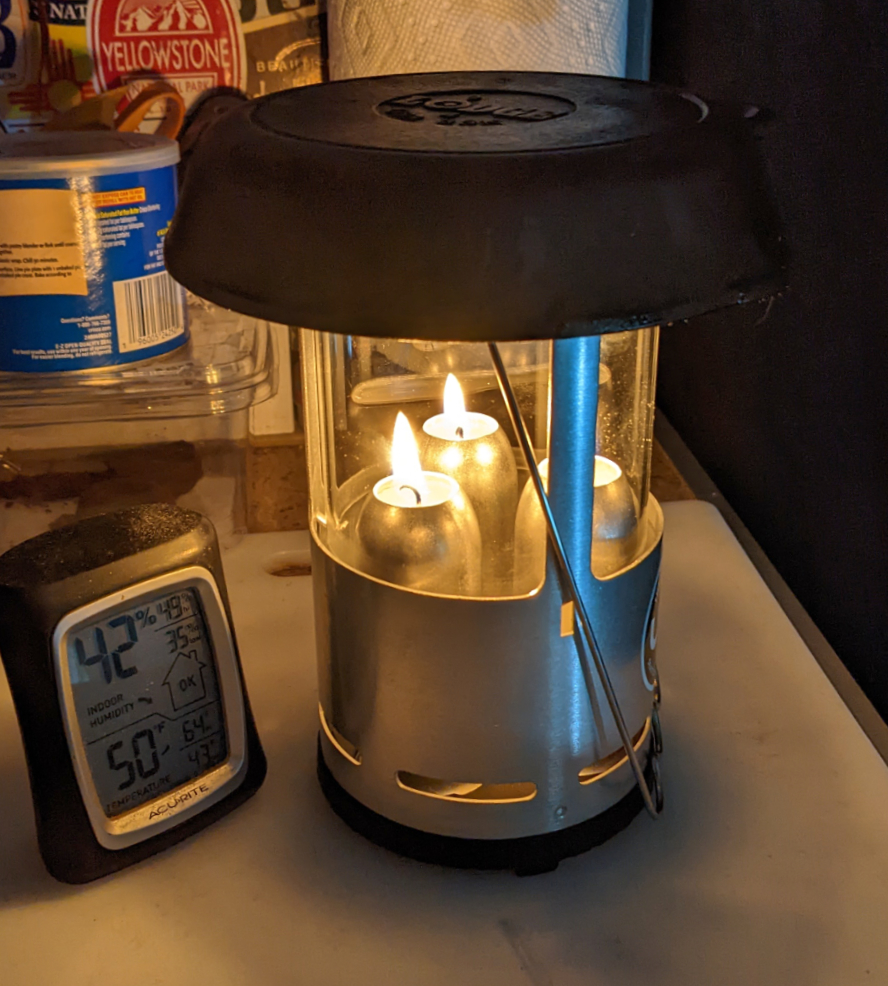
Conclusion
Basically, the UCO Gear Candlelier is a decent light source, but by itself it won’t keep you warm unless you’re in something the size of a Smart car. With two large dogs. Or one medium bear.
There’s a YouTuber who replaced the candles with little lamp oil burners he made from liquor mini bottles. He said it worked well while sleeping in his Prius. That could be. But one benefit of that modification is bypassing the expense of UCO’s proprietary candles. They call them 9-hour candles. That might be good for occasional use, but not for keeping a vehicle heated all winter. A 20-pack of their candles is about $35.00. If you were to use the Candlelier only nine hours a day, you’d go through a 20-pack in less than a week. For sixteen weeks of winter (not counting the chilly weeks before and after) that’s $560. That’s a lot, even if the Candlelier actually kept you warm.
However, you might have had a different experience with the Candlelier. Please share if you have.
UPDATE
Last night I let the Candlelier burn until it used up the candles. Yup, it burned about nine hours. Then this morning I went to remove the candle remains from the tubes. That was more of a chore than I expected.
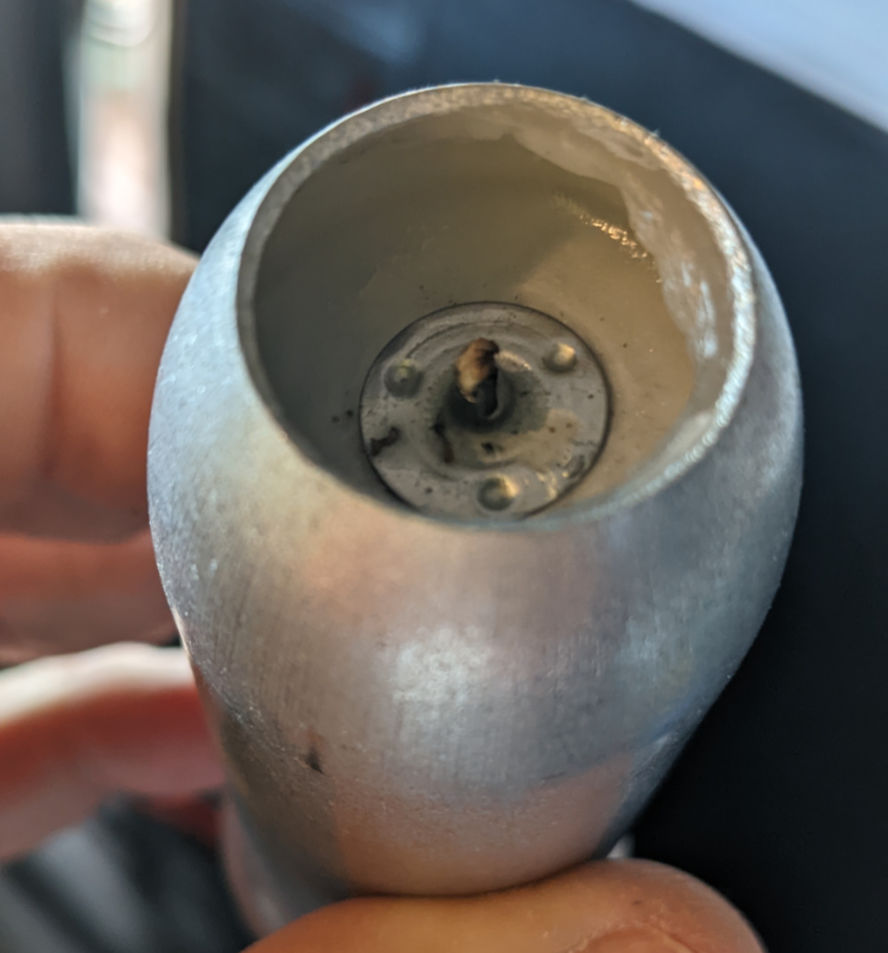
When the Candlelier cooled down the last bit of paraffin adhered itself to the tube and disk. And some of the paraffin had seeped past the disk and hardened on the tube walls.
Pushing on the paraffin and disk didn’t work. It was well stuck. So I used my lighter to warm the tube. That worked.
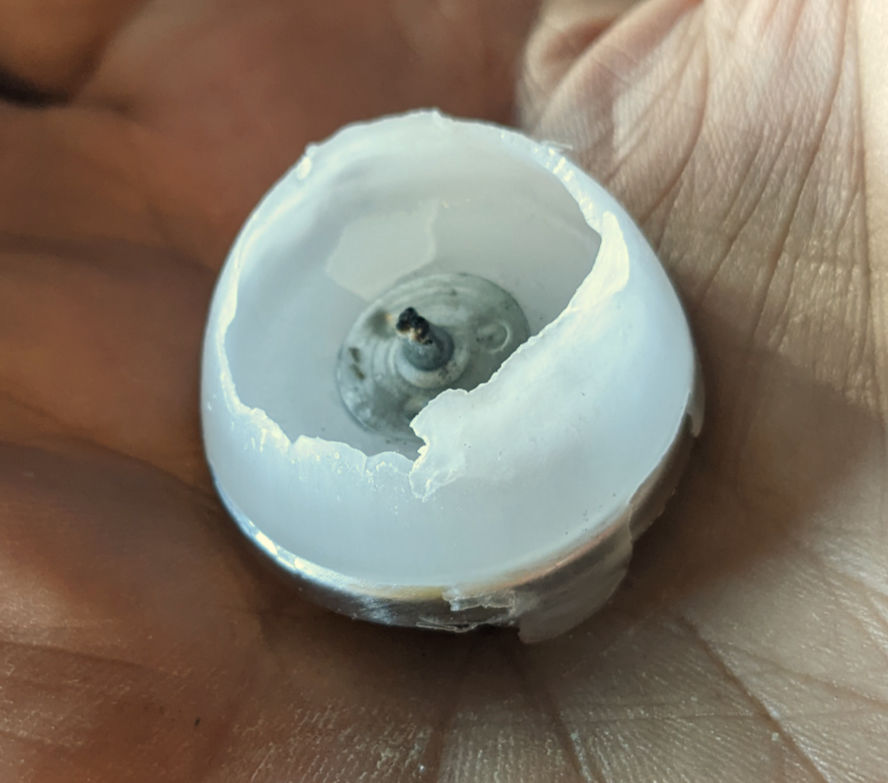
But I still needed to peel and chip the paraffin from the disk and the inner walls of the tubes — a messy job that needed to be done over my wastebasket. I wouldn’t want to be doing this daily.
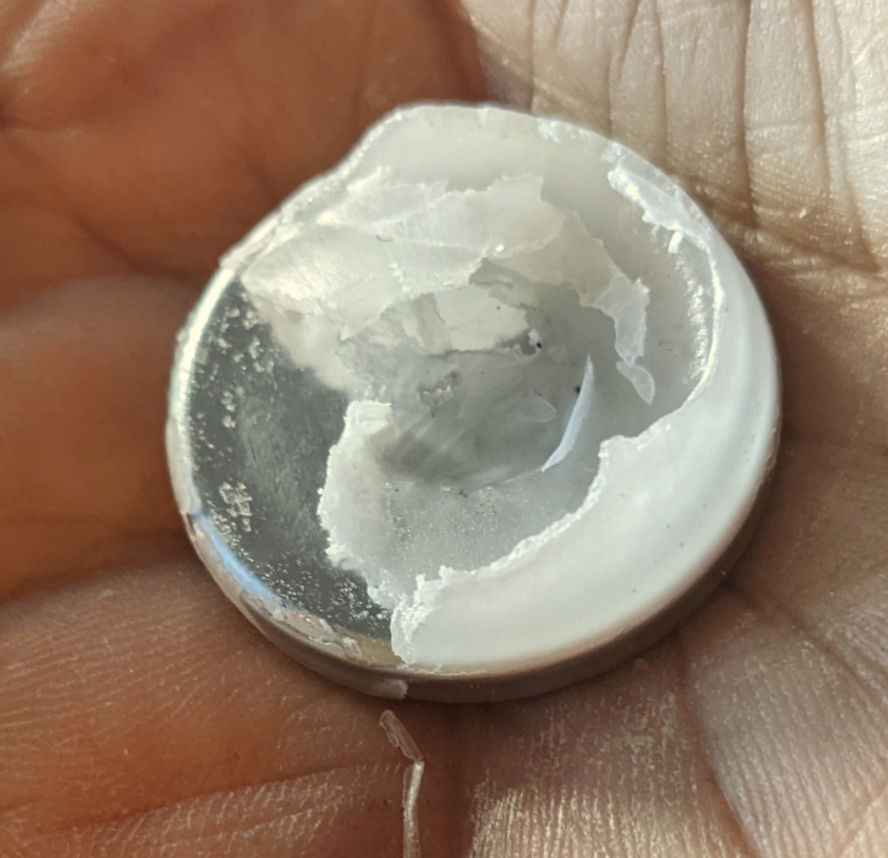


Thank you so much, Al.
I’ve been reading Bob’s older blog entries and realizing just how much CRAP I’ve been buying. I’m sure other folks who are new to the lifestyle have similar experiences.
Advertisers are going to advertise. It’s good to know you have our backs.
Mr Harrie would be proud that you are running tests, recording and sharing results with us. Perhaps “experience” should replace experiment to assure no apologies needed.
Approx. 1160 BTU per oz. of paraffin. Cast iron frying pan, radiant heat “feels” much better than hot air to me. So do these articles over well funded advertisers!
I would sleep well after three mini bottles of liquor…
Vibranium… a can of Foster’s… you’re walkin’ me language
I think I would go with the Crisco. How much would that cost compared to the candles. I don’t know how much Crisco costs now.
A 42 oz can of Walmart’s Great Value shortening is currently $5.18. A 48 oz can of Crisco is $9.26.
So glad to see this analysis. I’ve consideeed buying one of these. Instead I opted for I bought the bulletshaker on Amazon. I found it to be effective especially when used with my Coleman gas one stove.
A while back I turned a candlelier into a liquid fuel burning heater. It was a fun experiment but the results didn’t justify the cost, in my opinion. Switching over to Tito’s bottles and buying the liquid fuel probably cost around $20. It did put out a fair bit of heat and light but the wicks have to be adjusted to keep from making black smoke. If you’ve got a sensitivity to smoke, this might not be for you.
Un-scientifically speaking, there’s no replacement for displacement. The candlelier might be good at maintaining a warm space but to get the space warm in a reasonable amount of time you benefit from more btu’s.
The manufacturer’s claim of 5000 BTUs is the total for 9 hours (candle duration). That’s 556 BTUs per hour. One human’s body heat is about 250 BTUs per hour, so running the Candlelier is like having two more people in your van. Some nomads claim the real benefit of running a candle lantern is driving off moisture, not providing heat.
Which is not how other heating devices calculate BTUs.
LOL…. ‘2 Large dogs or a BEAR’
I love y’all’s sense of humor! And your honesty!